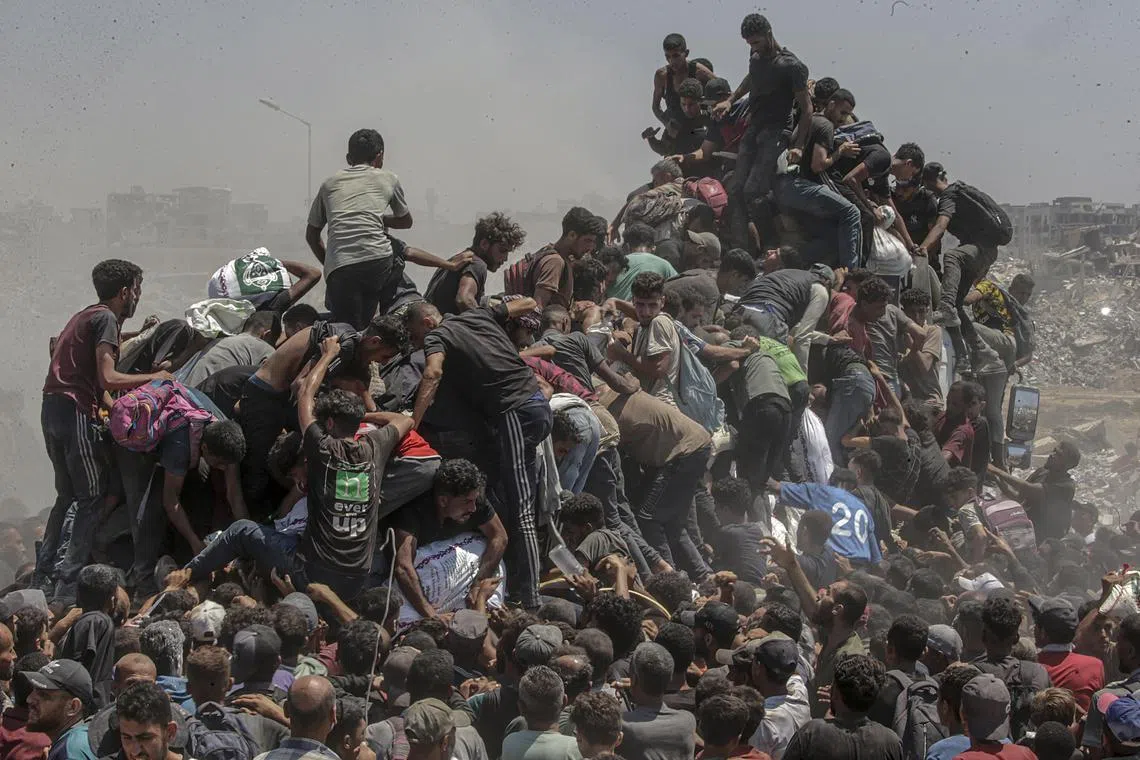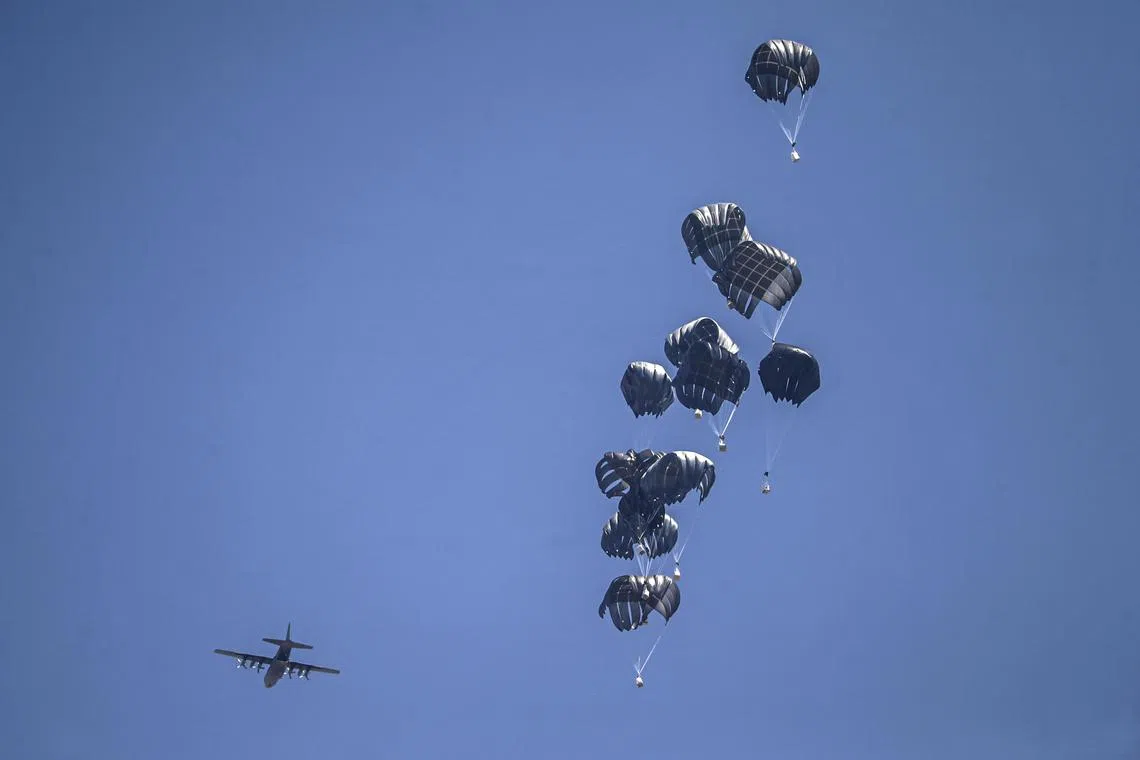UN to use ‘humanitarian pauses’ to try to reach Gaza’s starving
Sign up now: Get ST's newsletters delivered to your inbox

A throng of desperate men and boys overwhelm a truck carrying food aid at a distribution point in northern Gaza on July 27.
PHOTO: EPA
Follow topic:
GENEVA – The United Nations said it would try to reach as many starving people as possible in Gaza after Israel announced it would establish secure land routes for humanitarian convoys.
The UN’s World Food Programme (WFP) said it has enough food in, or on its way to, the region to feed the 2.1 million people in the Gaza Strip for almost three months.
UN emergency relief coordinator Tom Fletcher said on X he welcomed the announcement of “humanitarian pauses”
“In contact with our teams on the ground who will do all we can to reach as many starving people as we can in this window,” he said.
WFP said the pauses and corridors should allow emergency food to be safely delivered.
“Food aid is the only real way for most people inside Gaza to eat,” it said in a statement.
It said a third of the population have not been eating for days, and 470,000 people in Gaza “are enduring famine-like conditions
WFP said more than 62,000 tonnes of food assistance is needed monthly to cover the entire Gaza population of two million.
The agency noted that, on top of the “pause” announcement, Israel has pledged to allow more trucks to enter Gaza with quicker clearances along with “assurances of no armed forces or shootings near convoys”.
“Together, we hope these measures will allow for a surge in urgently needed food assistance to reach hungry people without further delays,” it said.
‘Dystopian landscape’
UN rights chief Volker Turk said Israel, as the occupying power in Gaza, is obliged to ensure sufficient food is provided to the population.
“Children are starving and dying in front of our eyes. Gaza is a dystopian landscape of deadly attacks and total destruction,” he said in a statement.
He criticised a US- and Israel-backed outfit, called the Gaza Humanitarian Foundation (GHF), that in late May began distributing foodstuffs when UN-organised efforts were blocked.
Mr Turk said the GHF’s “chaotic, militarised distribution sites” are “failing utterly to deliver humanitarian aid at the scope and scale needed”.
His office says Israeli forces have killed more than 1,000 Palestinians trying to get food aid in Gaza since the GHF started operations, nearly three-quarters of them in the vicinity of GHF sites.

A third of Gaza’s population have not been eating for days, enduring famine-like conditions, aid workers say.
PHOTO: AFP
‘Starvation crisis’
“The starvation of people in Gaza must end now,” UN refugees chief Filippo Grandi said on X.
“Standing with UN and NGO colleagues ready to deliver desperately needed, lifesaving aid to hundreds of thousands at risk of death.”
Mr Fletcher’s UN Office for the Coordination of Humanitarian Affairs (Ocha) warned on July 25 that conditions on the ground in Gaza were “already catastrophic” and deteriorating.
“The starvation crisis is deepening,” it said.

Jordan’s air force drops humanitarian aid over northern Gaza on July 27.
PHOTO: EPA
Ocha said UN teams are in place to ramp up deliveries into the Palestinian territory as soon as they are permitted to do so.
“If Israel opens the crossings, lets fuel and equipment in, and allows humanitarian staff to operate safely, the UN will accelerate the delivery of food aid, health services, clean water and waste management, nutrition supplies, and shelter materials,” it said. AFP

